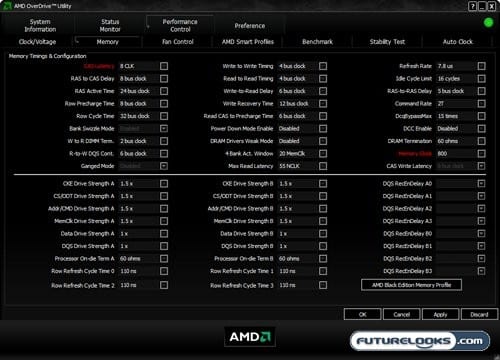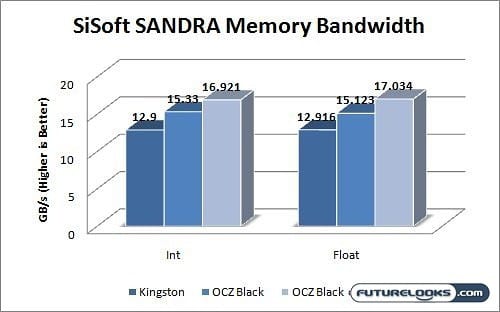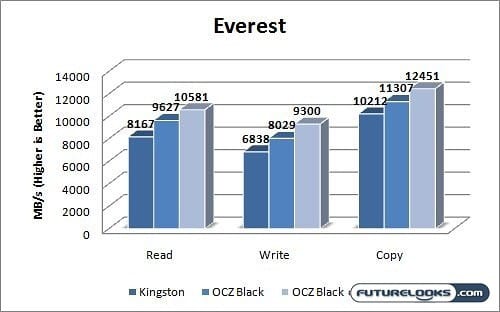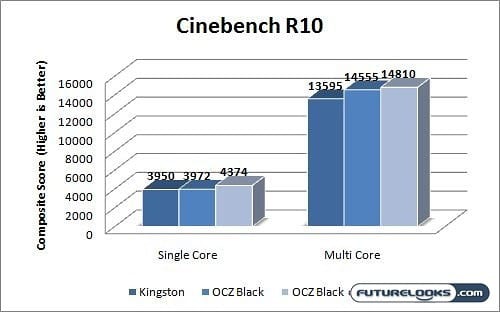Gotta Turn the Dial to 11 First

Now you don’t need AMD Black Edition certified RAM to use AMD OverDrive to overclock it. However, the certified RAM does support memory profiles with certain motherboards. This means that, with the right hardware, you can simply open up AOD and click on a single button to push your RAM to its advertised specifications. Compare that to the Kingston RAM we normally use, which wouldn’t run at similar specifications on any of our tests boards even though it was rated for similar speeds.
The only caveat is motherboard support. The normal GIGABYTE board we use for testing doesn’t support memory profiles, so I had to switch to the ASUS board. Once the profile was downloaded from the internet and enabled, everything ran as smooth as butter. We even managed to push the RAM we were provided for review to a solid 1776MHz at 8-8-8-20 timings. Not bad at all, considering that’s about 10% beyond it’s rated speed.
SiSoft SANDA is First Up

As you may have guessed the first benchmark we’re rolling out is the synthetic tests performed by SiSoftware’s SANDRA package, specifically the Memory Bandwidth benchmark. Now since the only RAM we had on hand was the Kingston kit, we had to use it for testing, even though it would only putter along at 1333MHz. Even at that speed, you can see that the bandwidth results scale near perfectly with the speed of the RAM.
The percentage of difference between each result near perfectly matches the percentage of difference in speed between the RAM. The big difference here is the ease by which the OCZ kit was overclocked.
Speed Traps on Everest
After taking a look at bandwidth, we move over to Everest to test read, write, and copy speeds of the OCZ AMD Black Edition RAM. Like before we’ll test both stock and overclocked speeds, and pit it against our lower clocked Kingston RAM kit.

The jump in posted results near matches the percentage jump in RAM speed, with only a variance of ±1% overall. The comparison between kits is a little different. Though the OCZ kit was 16.7% faster in acutal clock speed then the Kingston kit, it only managed to post results 14% faster overall. This isn’t a huge enough difference to warrant concern, as the percentage difference won’t be noticeable in day to day use.
Even if you consider that it might mean some loss in performance between the two brands, you have to occupy your thoughts with how little effort was put into overclocking the OCZ kit.
Lights, Camera, Cinebench

Finally we get to take a look at rendering using CineBench R10, and see when a speed increase actually matters in rendering time. During the single core test there was very little variation in the time results. Moving to the multi-core tests managed to mix things up a little. The OCZ kit posted a result 6.6% faster then our Kingston kit, and received a slight 2% bump with the overclock. While this doesn’t compare to the actual percentage difference in speed between the RAM, the minor bump does help.
